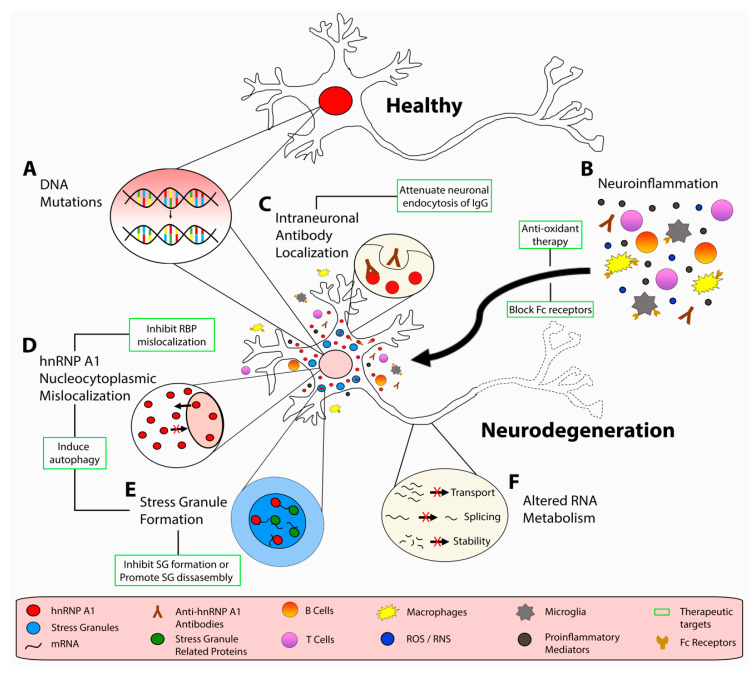Figure 1.
Potential pathogenic mechanisms of neurodegeneration in multiple sclerosis (MS). Under, homeostatic conditions, hnRNP A1 (red) is localized to the nucleus of neuronal cell bodies. In response to (A) genetic mutations, (B) neuroinflammation and corresponding proinflammatory mediators, oxidative stressors, and (B,C) autoantibodies, neuronal cell bodies display dysfunctional hnRNP A1 biology, including (D) hnRNP A1 nucleocytoplasmic mislocalization, (E) stress granule formation, and (F) altered RNA metabolism. A number of therapeutic strategies have been identified, which may prevent dysfunctional RBP-mediated neurodegeneration. These strategies include using (B) antioxidant and/or Fc blocking therapies, (C) altering neuronal endocytosis of IgG, (D) inhibition of RBP mislocalization, (E) inhibition of SG assembly or inducing SG disassembly, (D,E) and inducing autophagy.

